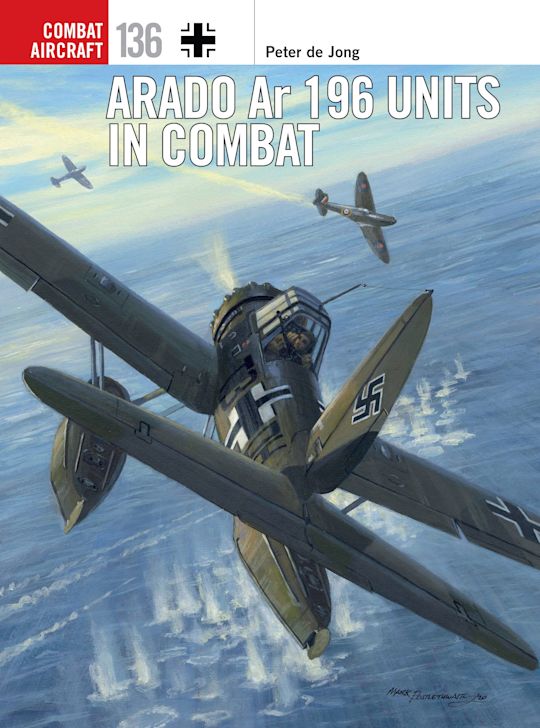Arado Ar 196 Units in Combat
Arado Ar 196 Units in Combat
Description
A detailed study of the attractive Arado Ar 196, one of the last fighting seaplanes. It was the standard seagoing aircraft for the German Kriegsmarine during World War II, providing the Luftwaffe with reach into the southern oceans.
Beating its biplane rivals in a 1936 Reich Air Ministry design competition, the Arado Ar 196 provided the Kriegsmarine with possibly the best shipborne reconnaissance seaplane of World War II. Replacing the Heinkel He 60 biplane as the standard catapult-launched floatplane embarked on the Kriegsmarine's capital ships, the Ar 196 flew an assortment of combat missions during World War II, including coastal patrol, submarine hunting, light bombing, general reconnaissance, and convoy escort sorties. The first vessel to take its Ar 196A-1s to sea was the pocket battleship Graf Spee, which embarked two in the autumn of 1939. The battleships Bismarck and Tirpitz could carry six Arados each, the battlecruisers Gneisenau and Scharnhorst four, and smaller pocket battleships and cruisers two. Shore-based aircraft were also operated from coastal ports on the Channel, Baltic, North Sea, and Bay of Biscay coasts, as well as in the Balkans and Mediterranean.
In this title, supported by an excellent selection of photographs and full-color illustrations, Peter de Jong explores the history of the Arado Ar 196, detailing their development and assessing the combat capabilities of one of the last fighting seaplanes.
Table of Contents
2. First Blood
3. Ahead of the Atlantic Wall
4. The Seven Seas
5. Eastern Front and the Mediterranean
6. War's End and Foreign Use
Appendices
- Colour Plates Commentary
- Bibliography
- Index
Product details
| Published | Feb 23 2021 |
|---|---|
| Format | Paperback |
| Edition | 1st |
| Extent | 96 |
| ISBN | 9781472844972 |
| Imprint | Osprey Publishing |
| Illustrations | Colour artwork plates and maps; black & white and colour photographs and illustrations. |
| Dimensions | 248 x 184 mm |
| Series | Combat Aircraft |
| Short code | COM 136 |
| Publisher | Bloomsbury Publishing |

Resources
Discover More
Visit our exclusive member's website to see artwork, maps, and more from this book.

Resources
Book Vote
Tell us what titles you would like to see published by Osprey, then vote for your favourites in our monthly book vote!



























